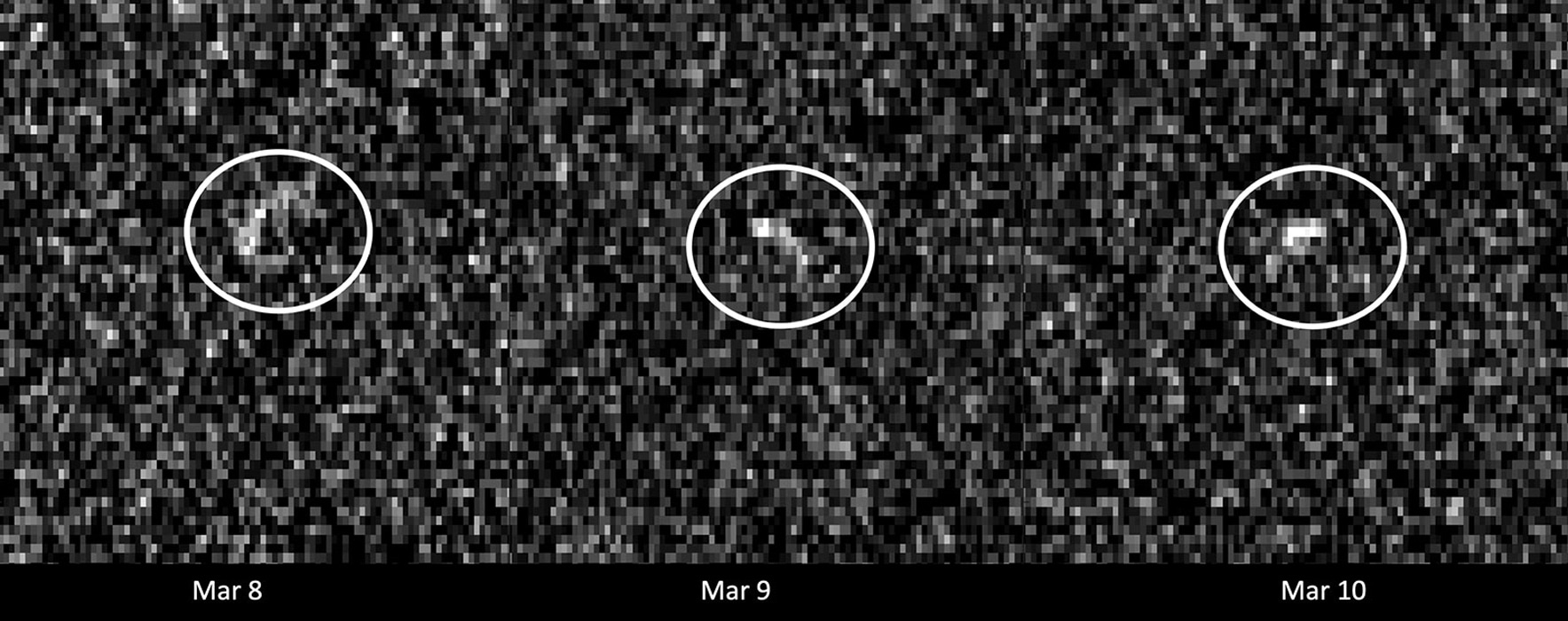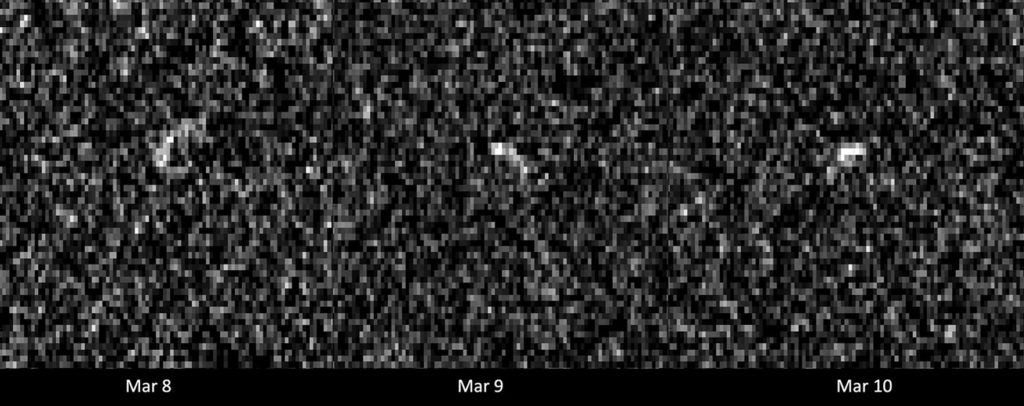
Known as one of the most hazardous asteroids, asteroid 99942 was believed to impact the Earth. Discovered in 2004, the asteroid is about 1,100 feet (340 meters) across.
After its discovery, the asteroid gained popularity as it could pose a serious threat to Earth when it would come uncomfortably close in 2029. But, now, radar observations denied such predictions.
The latest observations helped astronomers conclude that there is no risk of Apophis impacting our planet for at least a century. The risk of an impact in 2029 was later ruled out, as was the potential impact risk posed by another close approach in 2036. Until this month, however, a small chance of impact in 2068 remained.
The asteroid Apophis made a distant flyby of Earth on March 5, Astronomers took this opportunity to estimate its orbit around the sun with accuracy.
Davide Farnocchia of NASA’s Center for Near-Earth Object Studies (CNEOS) said, “A 2068 impact is not in the realm of possibility anymore, and our calculations don’t show any impact risk for at least the next 100 years. With the support of recent optical observations and additional radar observations, Apophis’ orbit’s uncertainty has collapsed from hundreds of kilometers to just a handful of kilometers when projected to 2029. This greatly improved knowledge of its position in 2029 provides more certainty of its future motion, so we can now remove Apophis from the risk list.”

The observations were made using the 70-meter (230-foot) radio antenna at the Deep Space Network’s Goldstone Deep Space Communications Complex near Barstow, California. The radio antenna precisely tracks Apophis’ motion.
JPL scientist Marina Brozovic, who led the radar campaign, said, “Although Apophis made a recent close approach with Earth, it was still nearly 10.6 million miles [17 million kilometers] away. Even so, we were able to acquire exact information about its distance to an accuracy of about 150 meters [490 feet]. This campaign not only helped us rule out any impact risk, but it also set us up for a wonderful science opportunity.”
“Although the radar imagery of Apophis appears pixelated, the images have a resolution of 38.75 meters (127 feet) per pixel, “which is a remarkable resolution, considering the asteroid was 17 million kilometers away, or about 44 times the Earth-Moon distance. If we had binoculars as powerful as this radar, we would be able to sit in Los Angeles and read a dinner menu at a restaurant in New York.”
Past observations suggest that the asteroid has a “bilobed,” or peanutlike, appearance. With more observations, astronomers hope to learn more about the asteroid’s shape and rotation rate and the axis it spins around (known as its spin state). This knowledge will enable them to determine the orientation the asteroid will have with Earth as it encounters our planet’s gravitational field in 2029, which could change that spin state and even cause “asteroid quakes.”
On April 13, 2029, the asteroid Apophis will pass less than 20,000 miles (32,000 kilometers) from our planet’s surface – closer than the geosynchronous satellites’ distance. During that 2029 close approach, Apophis will be visible to observers on the ground in the Eastern Hemisphere.
Continue reading Earth has no thread from the asteroid Apophis on Tech Explorist.

0 comments:
Post a Comment